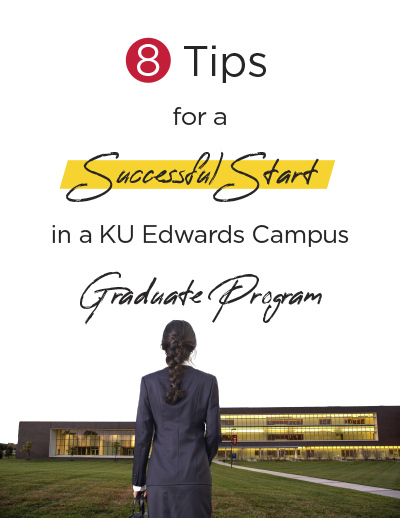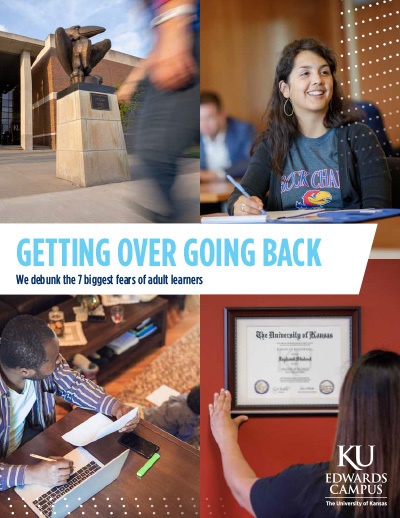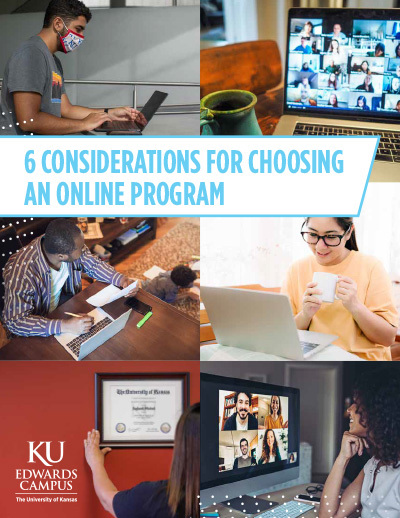The benefits of mindfulness for work

It can be easy to feel distracted or disconnected from your colleagues while working from home. You may have duties outside your career that have to be addressed. Maybe you find it hard to focus on work while checking headlines or trying to plan dinner or a grocery run. Perhaps you simply feel heightened anxiety that interrupts the flow of your day or prevents you from being fully present.
Mindfulness and self-care
Cases like these are some of the reasons that mindfulness practices have caught on for both individuals and workplaces in recent years. Alex Williams, psychology program director at the KU Edwards Campus, says that practicing mindfulness has a variety of benefits, among them, better self-care.
“Mindfulness has gained in popularity because, for some people, it can be a really helpful tool for mental health,” Williams said. “For some people, mindfulness can help you become more aware of your emotional state. For other people, it can give you a better emphasis on awareness of whatever they’re doing at that moment. Some people also use it as a pure relaxation exercise.”
Karl Kammerer, professionalism program director at the KU School of Business, has been actively practicing mindfulness since 2014 and says regular mindfulness practice helps him stay focused and feel more prepared to deal with the everyday stressors that build up during a normal workday.
“One of the things that takes up a lot of your energy during the week is work-related stress,” Kammerer said. “So, with a mindfulness practice, I find that I have a lot more stamina for trouble that comes up, or a challenging e-mail.”
What is a mindfulness practice?
Practicing mindfulness to improve your work life can help you focus and give you the emotional stamina you need to get through a difficult day. But what exactly does it mean, and what do mindfulness exercises look like?
“There’s so much that gets put under the banner of mindfulness, and people make it complicated, but it’s really a simple idea,” Kammerer said. “Mindfulness is setting the intention to pay attention, on purpose, to your moment to moment experiences non-judgmentally and with compassion. Allowing thoughts to come and go without judging them.”
As far as practices go, there are several options, including yoga, guided meditation, or even mindful eating—slowing down as you eat to fully taste and experience your food. Kammerer suggests starting with a breath awareness practice.
“That’s where most people begin. You want to keep your focus and attention on the feelings and sensations and experience of breathing in and breathing out,” Kammerer said. “When you find your mind wandering to thoughts like your dinner plans or grocery list, you recognize that your mind might run away despite your best intentions, and you gently bring it back and focus on your breath again.”
Kammerer says that taking a few minutes regularly for a mindfulness practice—like breath awareness or guided meditation—can help develop that skill much like a good workout develops your muscles.
“For me personally, exercise is a good analogy. If you exercise regularly, you can easily jog up a flight of stairs or run to a meeting if you need to without it being fatiguing,” Kammerer said. “It’s a little bit the same with a mindfulness practice.
What are the working benefits of mindfulness?
Many studies show that mindfulness has positive effects on stress and anxiety, and can help increase memory and focus. Several leading organizations, including Apple, Aetna and Google, actively support mindfulness training for their employees, and have found it improves their employees’ technical agilities. Williams says that the emotional awareness promoted by a mindfulness practice is part of what makes it helpful for work.
“The idea is that being more aware of your emotional state can help you can take actions more effectively to address your needs,” Williams said. “You could be at work, and aware that you’re agitated about something, and then use that opportunity as a moment to redirect yourself, and do what you need to do for work versus having that agitation simmering, sitting there and distracting you, and not being aware of why that’s happening.”
Kammerer says that in addition to improving focus, having a set mindfulness practice for work, one that includes practice with colleagues, can be a way for employees to feel more invested in each other, even currently, with many offices still working remotely.
“When it becomes a group practice, you connect with others that way,” Kammerer said. “Right now, in a time that’s really stressful for a lot of organizations and individuals, even having a remote mindfulness program can be beneficial for employees.”
Kammerer is part of a group facilitating a mindfulness practice over Zoom, and says it’s been beneficial. “While Zoom isn’t quite the same as coming together as a group physically, I think it’s helped people maintain a strong connection and cut down on some of the isolation or disconnection from colleagues at work,” he said.
What are the benefits of mindfulness when working from home?
For those working from home who don’t have access to an established group practice through work, Kammerer says there are still plenty of options.
“You could start your own mindfulness group over Zoom. A couple of organizations, like Midwest Alliance for Mindfulness, also lead digital sessions,” Kammerer said. “There are also apps out there if you want to get started on your own. Headspace isn’t bad. It encourages you to come back and work through a series of meditations, and helps beginners get the hang of it.”
Kammerer suggests starting with something fairly simple, such as a breathing exercise or a body scanning exercise that helps you recognize and relax areas of the body that carry extra stress, and doing that exercise regularly.
“Even something as simple as establishing five minutes of time early in your day just for a breathing practice, can have long-term successful effects,” Kammerer said. “You can always come back to that practice at different points during the day if you’re feeling stressed or overwhelmed. In the end, there many different ways to practice paying attention, on purpose, to your moment to moment experiences non-judgmentally and with compassion, and I would encourage people that, with a little searching, they can find a practice that fits them and their needs.”
More from us on the learning benefits of mindfulness: Learning to Learn Better: Strategies for improving the behavior of learning
Learn more about the psychology program at the KU Edwards Campus
Learn more about the Bachelor of Business Administration program at the KU Edwards Campus





